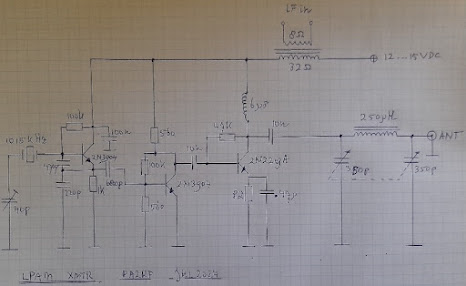From a popular supplier of electronic goodies, I purchased a tiny MW/FM radio (not a DIY kit). It does not have a loudspeaker but should be used with headphones. I was interested in the performance of the MW part of the radio.
And that really surprised me. It is a very sensitive receiver for the MW/AM band (530-1600 kHz) using a ferrite rod antenna. I thought nowadays the MW band should be almost 'dead'. But that is not the case. On this small radio I received a lot of broadcast stations past days.
I removed the battery case from the radio to find out what was the engine in this receiver. It turned out to be the IC KT0936M. After some research I found that the KT0936M is KT Micro's 3rd generation of integrated mono full band FM/MW/SW receiver chip supporting mechanical tuning with embedded MCU. The chip works with a supply voltage of 2.1V till 3.6V, so 2 AAA batteries can do the job.
To my surprise the IC covers a wide range from 500 kHz - 110 MHz! The chip has been designed to facilitate following bands:
- Maximum two FM bands with configurable FM frequency range
within 32MHz-110MHz
- Maximum two MW bands with configurable frequency
range within 500KHz -1750KHz
-Up
to 14 SW bands with arbitrary frequency range within 1.75MHz – 32MHz
The KT0936M has a high sensitivity, high signal-to-noise ratio and low distortion.
KT Micro provides following values for sensitivity:
1.6uV EMF for FM
16uV EMF for MW
13uV EMF for SW
IC KT0936M provides direct and simple interface to support mechanical tuning. A pre-programmed low cost EEPROM can also be used to configure the radio band settings. No external MCU is required.
If you search on the internet for KT0936M designs, you can find out how the specific bands can be selected (use of resistor network). The IC should be useable for our radio amateur shortwave bands. At least a BFO has to be added to the design. .





















